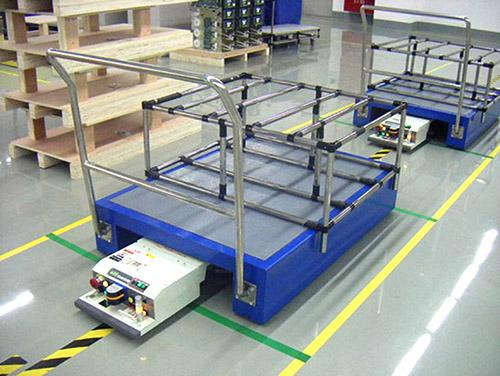In 1913, Ford Motor Company of the United States began to use guided vehicles with orbits;
In 1953, the United Kingdom first developed the electromagnetically guided AGV, which was converted from a towed tractor with a car pocket and transported goods along a wire placed in the air in a grocery warehouse;
In the late 1950s, AGV has been promoted in Europe, and various types of traction AGVs have been used in factories and warehouses;
Computer technology was used in AGV system control and management in the 1960s;
In the 1970s, the scope of AGV applications continued to expand. In 1973, the Volvo assembly plant in Kalmar, Sweden, embarked on the BJ311 laser guided transporter operating instructions to develop an asynchronous assembly line to replace the traditional conveyor assembly line. At this point, the number of computer-controlled assembly AGVs reached 280. ;
In the 1980s, wireless guidance technology was introduced into the AGV system, such as laser and inertia and magnetic stripe and vision guidance, which increased the flexibility and accuracy of the AGV system, and when it was necessary to modify the path, Alter the ground or interrupt production. The introduction of these guiding methods makes the guiding method more diverse. AGV develops with the development of computer technology, with reduced cost, advanced performance and rapid popularity, and has formed a new industry;
The initial laser navigation requires a reflector to assist; inertial navigation is achieved by measuring the acceleration and angular velocity of the ship using two kinds of inertial sensors, gyroscope and accelerometer; magnetic navigation also needs to lay a magnetic strip on the ground to complete the autonomy. Navigation, visual navigation uses strip-shaped road signs painted on the ground as path identifiers, using computer vision to quickly identify paths.
In the 1990s, there were more than 40 AGV manufacturers worldwide and more than 15 models. AGV enters a highly intelligent, digital, networked, and information-based era;
To date, the world has more than 15,000 AGV systems and approximately 100,000 AGVs. With the development of science and technology, the technology of AGV will continue to develop in the future. From the beginning of the tractor to the current independent robots, AGV's continuous "growth" really makes people stunned!





